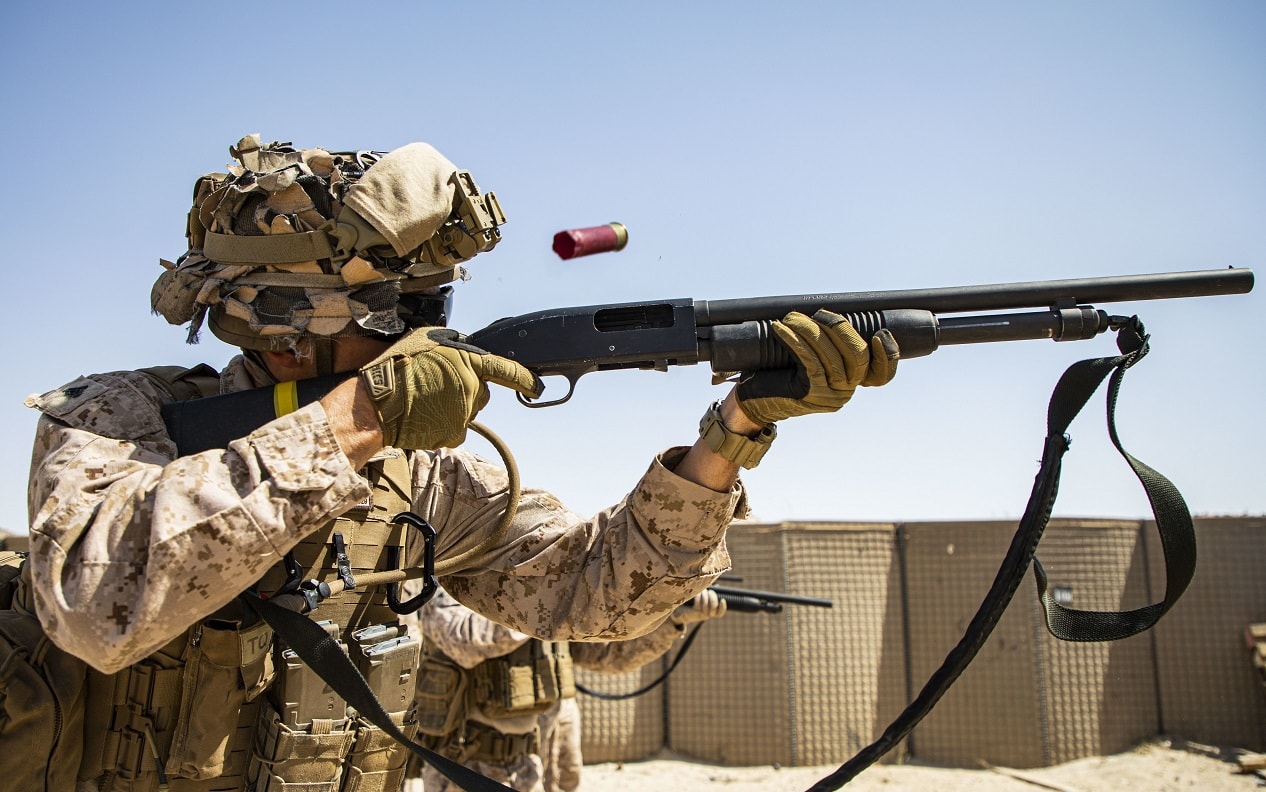The war in Ukraine oftentimes means that the citizens of that wartorn country must do what it takes to fight back against Russia.
And often, that means social media is there to catch some very interesting military confrontations that show how barbaric and challenging the conflict has become for Kyiv.
Case in point: some in Ukraine are doing whatever it takes to take out Putin’s drones.
Putin Sends in the Drones, Ukraine Fights Back
It might be easy to confuse a new video recorded in Ukraine with one from last fall’s duck hunting season.
In the 24-second clip, which was shared to social media by open-source military intelligence tracker OSINTtechnical (@Osinttechnical), two individuals in camouflage are seen shooting into the sky. One is even using a pump-action 12-gauge shotgun.
The soldiers, identified as being from Ukraine’s Air Command South, were not actually shooting at waterfowl, but rather were attempting to shoot down a Russian Lancet loitering munition.
The Lancet in the Crosshairs
The ZALA Lancet loitering munition, designed by the ZALA Aero Group, a subsidiary of the Kalashnikov Group, is one of the few successful domestically built Russian platforms to see service in Ukraine. The Lancet is the successor to the Kub, an earlier, flying-wing-style loitering ordnance system also developed by ZALA. The Lancet was first unveiled in June 2019. It was field-tested in Syria, where anti-government forces in Idlib used it in 2020-2021.
The Lancet features two X-shaped wings at the front and rear of the fuselage and is powered by an electric motor that drives a two-bladed propeller located at its rear. The drone is constructed of plastic and composite materials and weighs just 12 kilograms, including its 3 kg payload.
The munition has a maximum range of 40 kilometers, and its endurance is approximately 40 minutes. The ZALA Lancet has been employed in Ukraine in both a reconnaissance and attack role, and during flight it can be directed by GPS coordinates or visual control. During the terminal part of a mission, it can be controlled manually to target via electro-optical guidance and a TV guidance unit.
Specialty Rounds Needed
Ukraine has struggled to counter the Lancet, and Kyiv’s forces have even sought to use metal mesh tarps as a form of reactive armor over artillery and forward observation posts. A shotgun with the right load could be another option.
It was not clear what types of rounds the shooter with the shotgun was using in the recent video, but it did appear that he scored a hit. Moreover, a shotgun loaded with specialty Flechette or SCMITR rounds could be especially well suited for drone season on the modern battlefield.
Flechette rounds, which offer a series of small, fin-stabilized, sharpened projectiles, were designed for close-quarter environments. They could prove ideal for use against low-flying unmanned aerial vehicles such as the Lancet.
The same holds true for the aptly named experimental SCMITR round that was developed in the 1970s. The concept called for the round to launch eight razor-edged stamped sheet-metal arrows when fired. The load could be effective out to 150 meters. Able to penetrate body armor or 3mm of mild steel, it was considered effective but prohibitively expensive to manufacture, which is why it was never mass-produced.
However, the increased use of drones to target soldiers on the front lines does suggest that a close support weapon to counter such a threat will need to be developed. A shotgun with the right load could be such an option.
It is somewhat fitting too, given that the trench shotgun first made an appearance during the First World War when it was carried by American soldiers. It proved so deadly that the Germans formally protested its use. The shotgun could see new use on the battlefield, this time against an equally deadly threat.
A group of Ukrainian soldiers from Air Command South down a Russian Lancet loitering munition with small arms fire, including fire from a pump action 12ga shotgun. pic.twitter.com/G2kwioQslu
— OSINTtechnical (@Osinttechnical) June 1, 2023
Author Experience and Expertise
A Senior Editor for 19FortyFive, Peter Suciu is a Michigan-based writer. He has contributed to more than four dozen magazines, newspapers, and websites with over 3,200 published pieces over a twenty-year career in journalism. He regularly writes about military hardware, firearms history, cybersecurity, politics, and international affairs. Peter is also a Contributing Writer for Forbes and Clearance Jobs. You can follow him on Twitter: @PeterSuciu.
From 19FortyFive
Ukraine Footage Shows U.S. M982 ‘Excalibur’ Cut Through Russian Artillery
How To Sink A $3 Billion Dollar Submarine: Leave A Hatch Open
Smashed To Pieces: Video Shows Ukraine Hitting Russian Air Defenses

